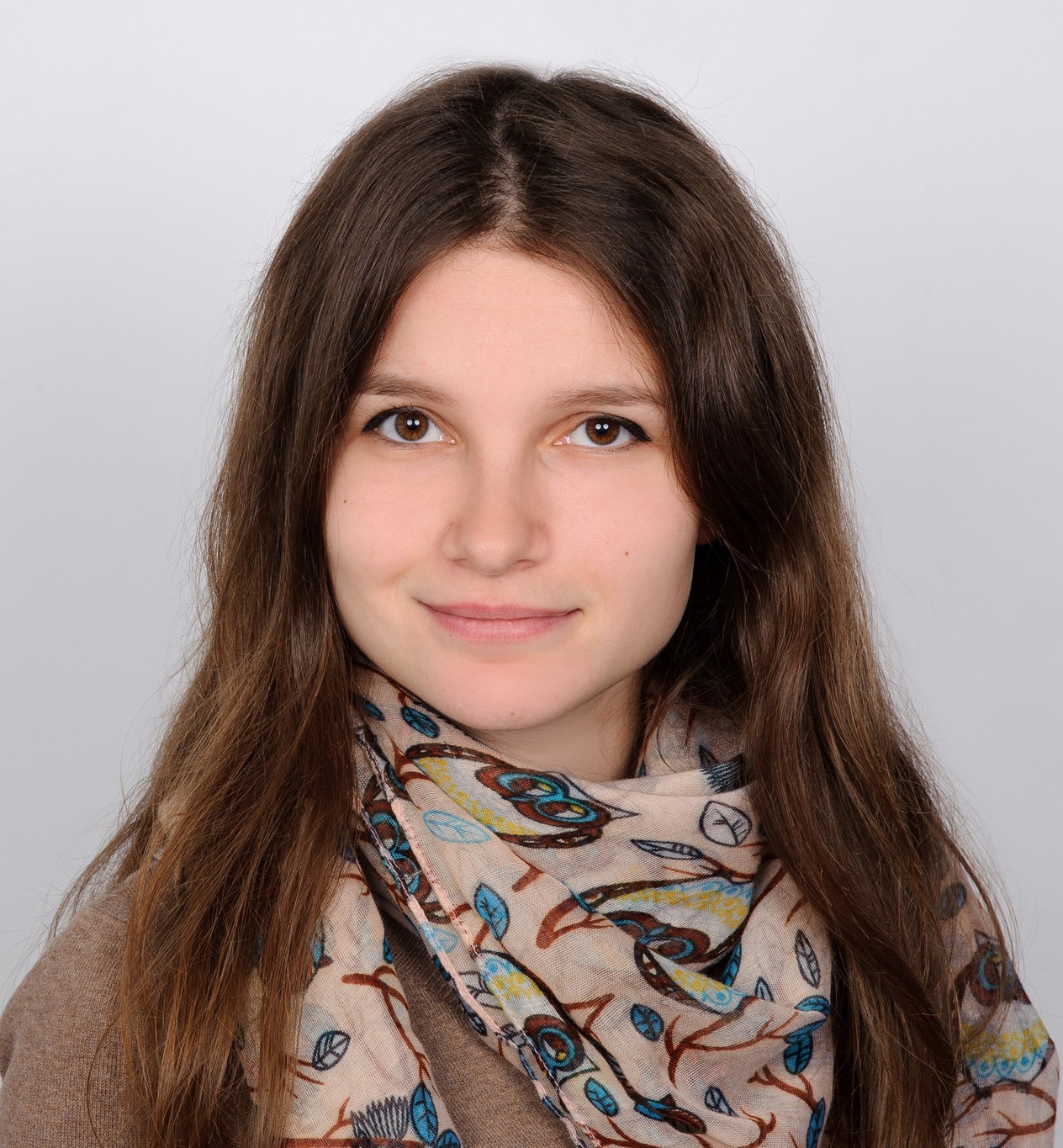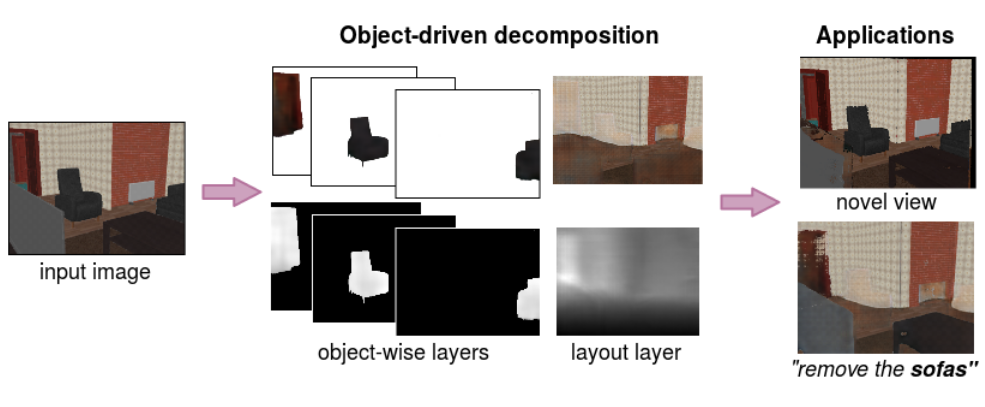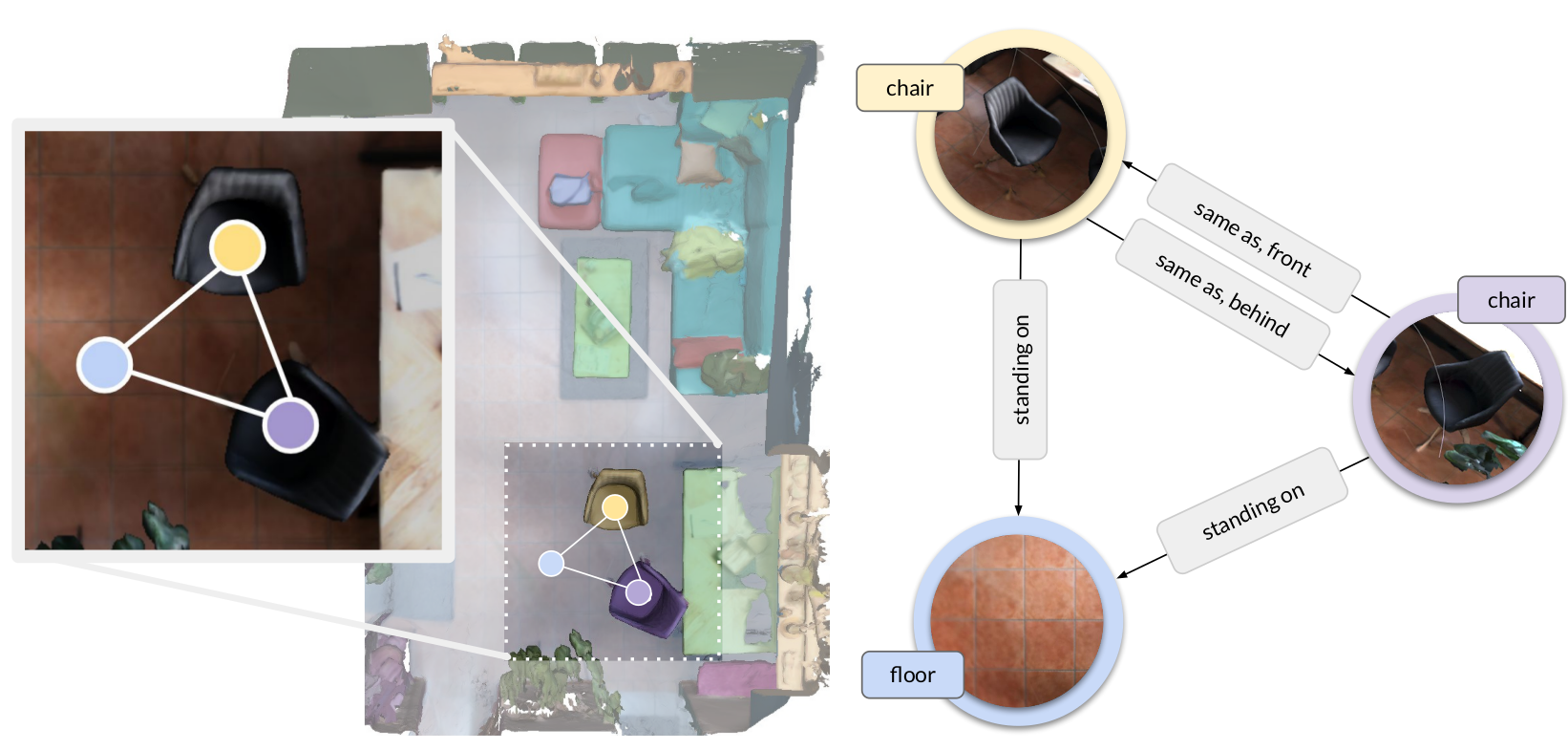Helisa Dhamo
Contact
 |
Helisa Dhamo
Chair for Computer Aided Medical Procedures & Augmented Reality
|
News
- July 2021: Two papers accepted at ICCV 2021!
- May 2021: Received an Outstanding Reviewer acknowledgement from CVPR 2021.
- September 2020: Starting a Research Internship at Facebook Reality Labs.
- September 2020: Gave an invited talk at ENPC on Scene Understanding and Representations.
- February 2020: Two papers as (shared) first author accepted at CVPR '20!
- July 2019: One paper accepted at ICCV '19!
- May 2019: One paper accepted for publication at PRL Journal!
Student Projects
I will not be taking on new student projects from September to December 2020.| Available | |
| Master Thesis | 3D Scene Understanding Leveraging Scene Graphs (Helisa Dhamo Fabian Manhardt, Federico Tombari) |
| Running |
Teaching
- Praktikum Perception and Learning in Robotics and Augmented Reality (2020SoSe)
- Hauptseminar Computer Vision and Deep Learning for Autonomous Driving (2019WiSe)
- Hauptseminar Computer Vision for Augmented Reality (CV4AR) (2019SoSe)
- Hauptseminar Computer Vision and Deep Learning for Autonomous Driving (2019SoSe)
- Hauptseminar Deep Generative Models (2019SoSe)
- Hauptseminar Recent Trends in 3D Computer Vision and Deep Learning (2018WiSe)
- Praktikum Perception and Learning in Robotics and Augmented Reality (2018SoSe)
- Hauptseminar Recent Trends in 3D Computer Vision and Deep Learning (2017WiSe)
- Hauptseminar Deep Generative Models (2018WiSe)
- Hauptseminar Deep Generative Models (2018SoSe)
- Hauptseminar Foundations of Computer Vision (2017WiSe)
Publications
| 2021 | |
| S. Garg, H. Dhamo, A. Farshad, S. Musatian, N. Navab, F. Tombari
Unconditional Scene Graph Generation IEEE International Conference on Computer Vision (ICCV), October 2021 The first two authors contributed equally. (bib) |
|
| H. Dhamo, F. Manhardt, N. Navab, F. Tombari
Graph-to-3D: End-to-End Generation and Manipulation of 3D Scenes using Scene Graphs IEEE International Conference on Computer Vision (ICCV), October 2021 The first two authors contributed equally. (bib) |
|
| 2020 | |
| J. Wald, H. Dhamo, N. Navab, F. Tombari
Learning 3D Semantic Scene Graphs from 3D Indoor Reconstructions IEEE Computer Vision and Pattern Recognition (CVPR), Seattle, WA, USA, June 2020 The first two authors contributed equally. (bib) |
|
| H. Dhamo, A. Farshad, I. Laina, N. Navab, G. D. Hager, F. Tombari, C. Rupprecht
Semantic Image Manipulation Using Scene Graphs IEEE Computer Vision and Pattern Recognition (CVPR), Seattle, WA, USA, June 2020 The first two authors contributed equally. (bib) |
|
| 2019 | |
| H. Dhamo, N. Navab, F. Tombari
Object-driven Multi-Layer Scene Decomposition from a Single Image International Conference on Computer Vision (ICCV), Seoul, Korea, October 2019 (bib) |
|
| H. Dhamo, K. Tateno, I. Laina, N. Navab, F. Tombari
Peeking Behind Objects: Layered Depth Prediction from a Single Image Pattern Recognition Letters, Vol. 125, 2019 (bib) |
|
Research Projects
My research interests include the application of deep learning in computer vision. In particular I work on ambiguous aspects of scene understanding, such as generating occluded regions and semantic manipulation.
Layered Depth Prediction
Given a single image, we regress a Layered Depth Image (LDI), which contains information about the occluded regions in the reference frame and can fill in occlusion gaps in case of small view changes.
In Peeking Behind Objects, we separate the given scene in two layers, a foreground and a background, on a pipeline based on depth prediction and object inpainting. We show the applicability of the obtained RGB-D representation in view synthesis.

In the object-driven approach, we incorporate scene understanding to decompose the scene such that it is represented as object layers as well as a layout (background) layer. This makes the number of layers that describe a scene dependent on the complexity of the scene. Additionally, besides view synthesis, it enables object removal from the original image. Project Page

Scene Graphs
Scene graphs refer to a data representation that semantically describes a scene, composed of nodes (objects) as well as edges (relationships between objects).

We address the novel problem of image manipulation from scene graphs, in which a user can edit images by merely applying changes in the nodes or edges of a semantic graph that is generated from the image. Our goal is to encode image information in a given constellation and from there on generate new constellations, such as replacing objects or even changing relationships between objects, while respecting the style from the original image. Our training strategy does not require direct supervision for image edits. Project Page | Code
We leverage inference on scene graphs as a way to carry out 3D scene understanding, mapping objects and their relationships. In particular, we propose a learned method that regresses a scene graph from the point cloud of a scene. In addition, we introduce 3DSSG, a semi-automatically generated dataset, that contains semantically rich scene graphs of 3D scenes. Project Page

Education
| May 2017 | M.Sc. Computational Science and Engineering, TUM. Thesis topic: "Depth Prediction from Structured Light using Fully Convolutional Neural Networks" |
| UsersForm | |
|---|---|
| Title: | M.Sc. |
| Circumference of your head (in cm): | |
| Firstname: | Helisa |
| Middlename: | |
| Lastname: | Dhamo |
| Picture: | |
| Birthday: | |
| Nationality: | Albania |
| Languages: | English, German, Spanish |
| Groups: | Computer Vision |
| Expertise: | |
| Position: | Scientific Staff |
| Status: | Active |
| Emailbefore: | helisa.dhamo |
| Emailafter: | tum.de |
| Room: | MI 03.13.041 |
| Telephone: | |
| Alumniactivity: | |
| Defensedate: | |
| Thesistitle: | |
| Alumnihomepage: | |
| Personalvideo01: | |
| Personalvideotext01: | |
| Personalvideopreview01: | |
| Personalvideo02: | |
| Personalvideotext02: | |
| Personalvideopreview02: | |
